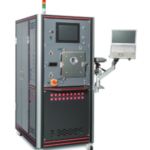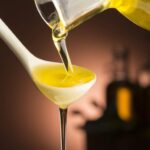Interview with an engineer who designs vacuum equipment. He graduated from the Department of Engineering at Hokkaido University, and took a job supporting researchers.

Chief engineer of technical development
He is from Ishikawa and graduated from Department of Engineering, Hokkaido University.
During studying in Hokkaido University, he was involved in many research and development activities at the High Energy Accelerator Research Organization, such as XAFS.While he was a university student, he was approached by the president of SUGA, a business partner of the university, which led to his decision to join the company.
XAFS is a technique for analyzing absorption spectra obtained by irradiating materials with X-rays.
Contents
Current main work involves the development and design of research equipment
It is a very difficult but rewarding job because we need to determine the research themes, requests, and needs of the researchers at Hokkaido University, our main client, in detail, and design products that can meet the demands they are seeking.
I have designed ALD and sputtering equipment, which are now catalog items, as well as custom-made and special-order fluidized-bed testing equipment.

He likes ‘research’.
I like to learn about various topics from university researchers, as well as experiment and research new equipment and designs in-house to meet their needs.
One of the most enjoyable achievements to date has been the research on field emission using the PEEM equipment at Hokkaido University, where I supported the design and improvement of the equipment and was continuously involved in the field to produce a single result up to the publication of the paper.
There is great joy and satisfaction in work done together with researchers of the same age!
His hobbies are outdoor camping and fishing.
He is from Ishikawa Prefecture, but chose Hokkaido to work because of his longing for a place where his hobbies – snowboarding and camping – have a wide range of fields.
When he was a student, he became so addicted to snowboarding that sometimes went into the mountains more than 40 times in one winter.
After joining SUGA, he also learnt to fish in Hakodate’s bountiful waters, accompanied by his senior colleagues, the chief of the production department.
Recently, I have been going fishing and camping more and more, and I enjoy fishing for trout and carp, camping and enjoying the outdoors in unexplored areas such as Rishiri and Rebun islands, where even people from Hokkaido don’t often go.

I, the interviewer Imai, was also very much involved in the conversation, as I was someone who knew about the outdoor and fishing possibilities and splendor of Hokkaido, such as Itou fishing.
Strengths and products of SUGA as seen by the design staff.
In recent years, some of our products have been born out of our struggle to meet requests from researchers for equipment modifications and orders.
Many researchers have requested equipment with high versatility and flexibility, and SUGA’s ‘Plus Series’ of sputtering equipment was created to meet such demands.
These products are compatible with transfer units that work with ALD and annealing equipment, and are in high demand because they can send materials to another device without exposing them to the atmosphere.

SSP3000Plus Sputtering Equipment (Expandable type)
In other cases, some researchers wanted to rearrange the heaters in the fluidized bed testing system to accommodate various environments, so I made design changes to enable such rearrangements. In addition, I am involved in work from the researcher’s perspective, such as automating panel operation recipes to reduce the researcher’s time and effort and errors, and I strive to meet even the most detailed requests so that the researcher can maximize the achievements.
I value the ability to respond in detail to requests for improvements that are noticed only after the customer has actually used the equipment, as I believe this is an element that enhances research results.
Dreams of work
My dream at work is that SUGA’s R&D equipment will become more widely used in the world and be able to support many researchers.
Looking at the current market, it appears that large development manufacturers have a strong system to support their customers with a large group of people, have a good track record, and have won many deals with universities in Tokyo and other cities.
However, SUGA has also established branch offices in Tokyo and Shizuoka, and has staff with extensive experience in overseas sales, enabling us to provide attentive support to researchers not only in Japan but also around the world.
In terms of product quality and support system, SUGA is as good as and better than the major players.

Another thing that is unique to SUGA, for example the support of researchers at Hokkaido University, is the lightness of footwork that only a small company can provide.
When each researcher wants a tailor-made, custom-made or modified version, we are quick to respond.
I think the strength of our company, which is not found in large companies, is that we have a small group of highly skilled and knowledgeable people, each of whom can provide a one-stop service.
The purpose of doing this job is to contribute to society in my favorite field of research by making use of the company and my strengths in this way, and my dream is that such work will be recognized throughout the world!
Concluding the interview. Conclusion.
SUGA supports basic research and manufacturing around the world through the development of R&D equipment such as sputtering equipment.
Each and every one of our staff members also wants to use their strengths to meet more and more requests.
I interviewed the person in charge of design for this time. SUGA requires not only designers, but also many other associates, including sales people who organize contracts, engineers who install equipment and deal with breakdowns on site, and workers who perform lathe work and assembly in the factory.
If anyone is interested, please contact SUGA.





